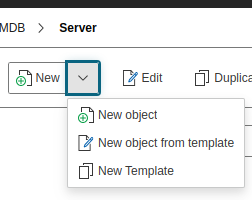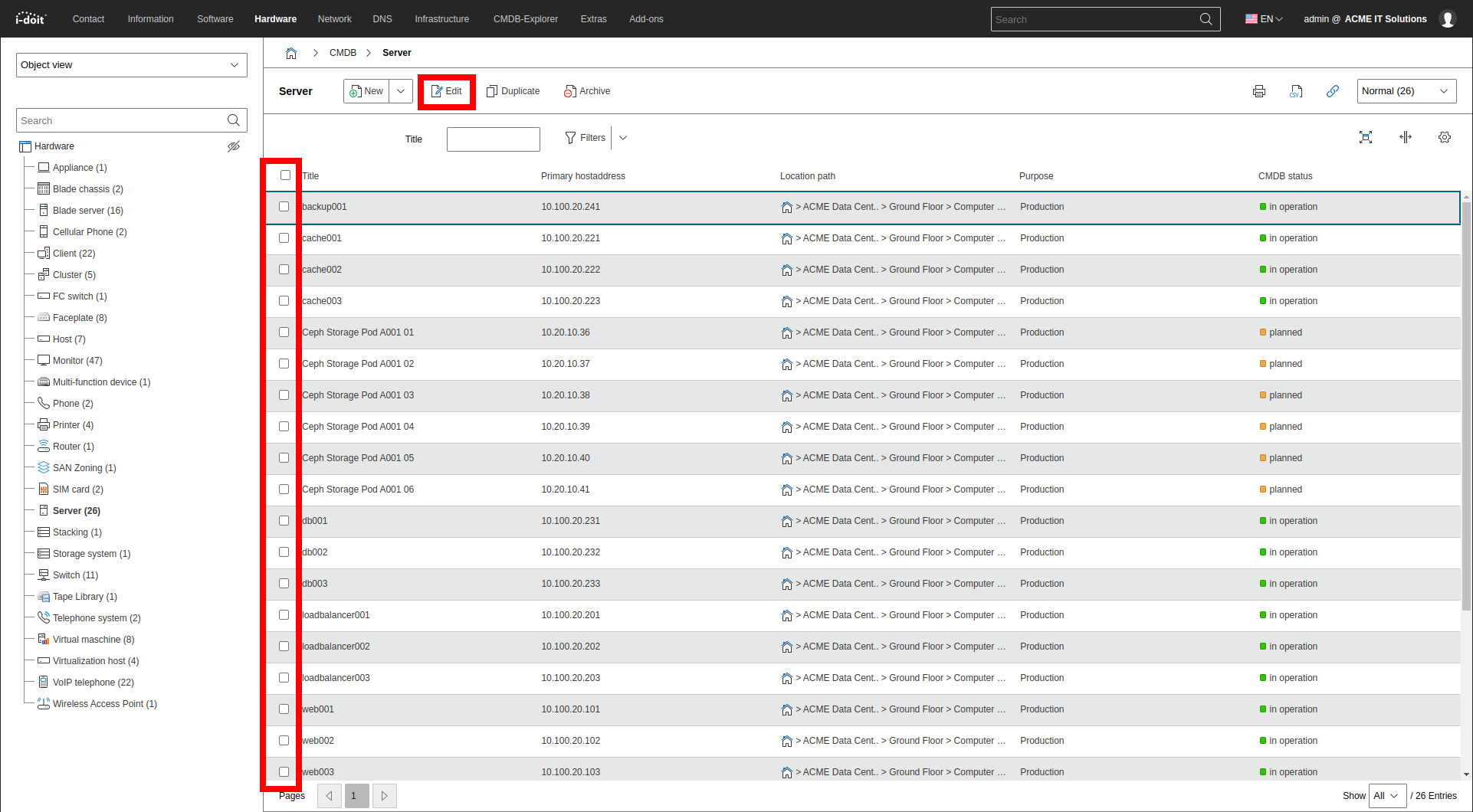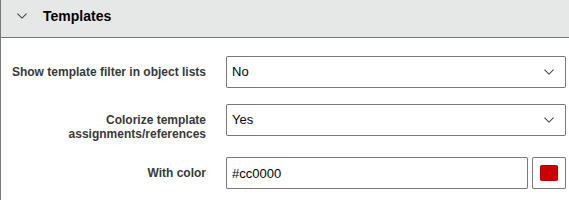Actions in Object Lists#
Above the object list is the action bar with which you can carry out various actions.
Create an Object#
Various options are available for the creation of a new object:
- New or New object create a new object which you can edit via forms.
- New object from template changes to the dialog which creates one or more objects from a template.
- New templatee is similar to the first item, but the state Template is preselected so that the object becomes a template after saving.
Edit an Object#
When you want to edit an object, select the object to be edited with the corresponding checkbox and click the Edit button. When you select more than one object, the list editing function is started.
Duplicate an Object#
Use the Duplicate button to duplicate an object with its attributes.
Objects: Archive, Mark as Deleted, Restore or Delete Irrevocably#
You can click the corresponding buttons to Archive, Delete, Restore, Purge and Quickpurge when you want to change the state of one or more objects or you even want to delete them irrevocably.
Print Preview#
A pop-up window showing the list with an optimized view for printing opens by activating the Print Preview button. The list is supplemented with attributes which are displayed on the summary page of the corresponding object.
Print preview of the web browser
The applied web browser can also generate a print preview. Here the superfluous elements of the Web GUI are not displayed:
- Firefox: File → Print preview
- Chrome: Menu → Print... or CTL+P
Export Object List as CSV file#
You can download the displayed object list as a CSV file with the 'Export as CSV' button and then process it with third-party applications. If you don't want the object ID next to the title in the CSV file, you can select Remove object IDs from CSV exported lists in Administration -> [tenant-name] Management -> Settings for [tenant-name] -> CMDB.
Link to this page#
To reload the page and thus the object list you can use the Link to this page button. This button is also useful to get the unique URL. However, it should correspond to the URL shown in the address bar of the web browser.
Change of state#
If you want to display only objects with a certain state, you can select the corresponding state with the drop-down menu on the right side of the action bar. You can see how many objects are in the respective state by the indications enclosed in parenthesis. As standard, the selected state is set to Normal. A change to another state is saved and therefore affects all other object lists.
You can activate the template filter in objects lists in the Administration





